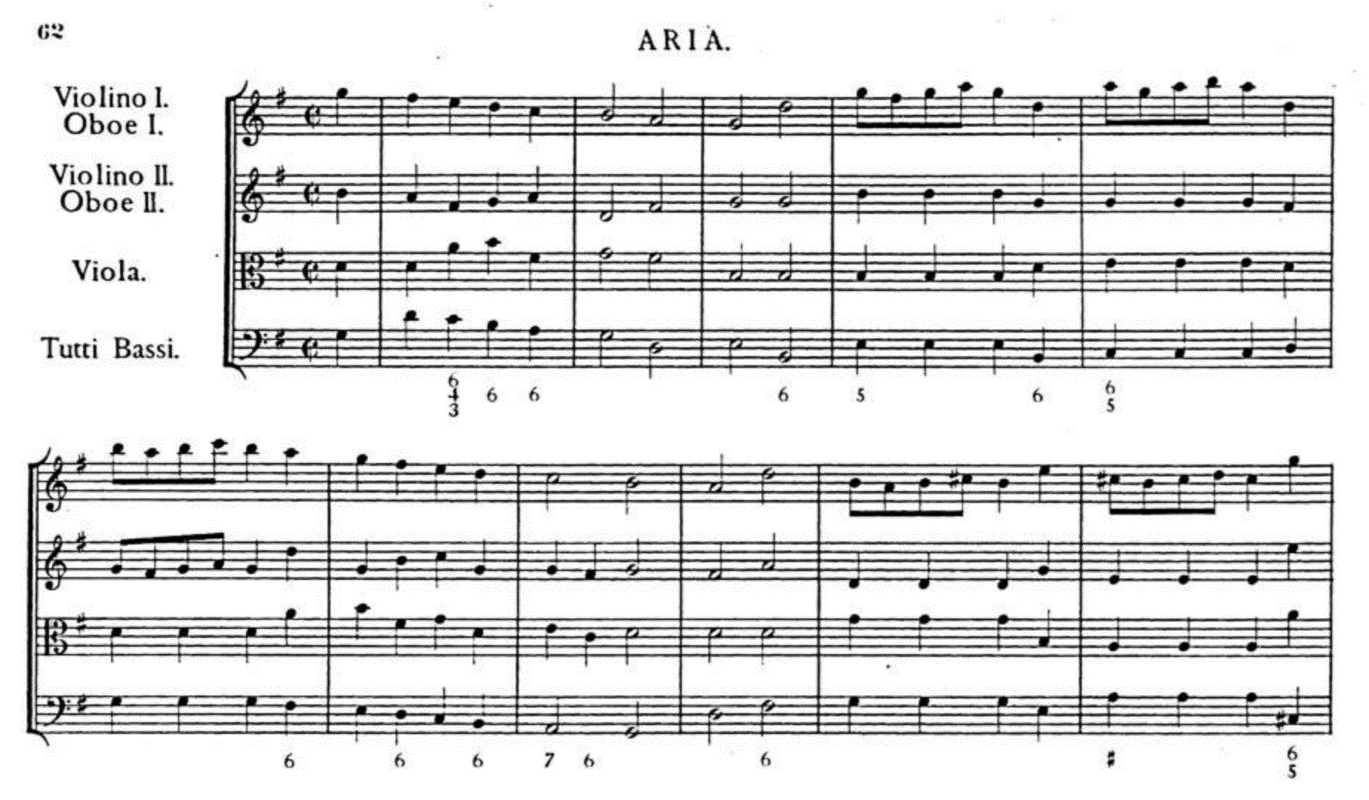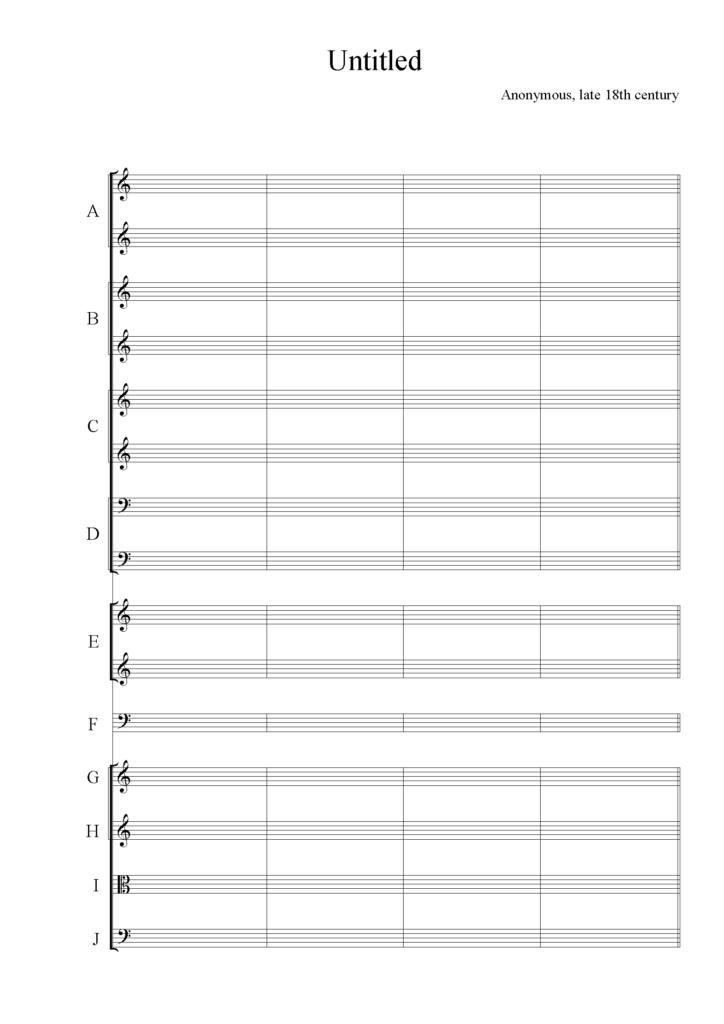Orchestral Scores
Orchestral scores began to develop in the seventeenth century, as the orchestral body started to take shape. After the establishment of the string choir as the core of instrumental music making, wind instruments were added to the strings sporadically, depending on which instruments were available for a particular performance and on the wishes of the composer or requirements of a paying patron. The organisation of scores varied considerably. It was common for instruments to share the same staves, for example bassoons and cellos, oboes and violins, etc., as they sometimes played identical music (Example 3.1). Baroque orchestral scores usually include the notation for the basso continuo written below the bass line.
The more standardised symphony orchestra did not emerge until the end of the eighteenth century. While some scores of the late Classical period, especially the manuscripts, still show some variety in the layout of the instruments, the fledgling music publishing industry began to standardise orchestral score formats. The modern layout placing the winds above the strings, and with instrument groups organised from higher pitched instruments to lower pitched instruments emerged at this time. It was also common, even in the eighteenth century, to have the cellos and double basses written on the same stave.
Today, modern scores are organised with woodwinds on top, followed by horns, then brass, then percussion, harp, piano, and the string parts at the bottom.
Classical Instrumentation
(Allow around 20 minutes for this activity)
Imagine you find a published score in an archive without any indications on the instrumentation. Considering what you’ve learned in this section, can you identify the instrumentation present in this score taking into account that this is a traditional Classical period orchestra?
Discussion
I hope your answer looked something like this:
A – Flutes
B – Oboes
C – Clarinets
D – Bassoons
E – Horns
F – Timpani
G – Violins I
H – Violins II
I – Violas
J – Celli and Double Basses

